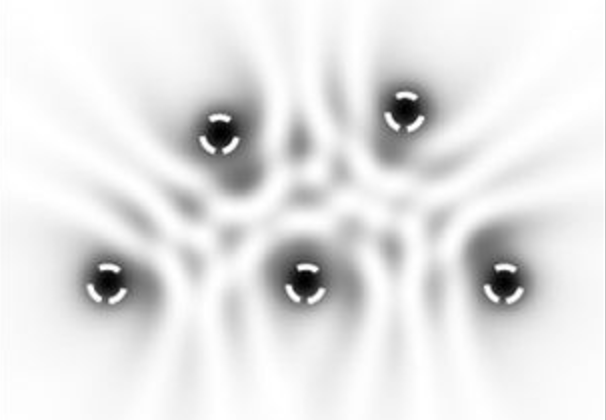Physicists Imagine a Supercomputer Based on ‘Magic Dust’

Credit to Author: Emanuel Maiberg| Date: Thu, 28 Sep 2017 12:00:00 +0000
Researchers have demonstrated a new type of computation based on “magic dust” that has the potential to upend the supercomputing future. The dust, which is really composed of quasiparticles known as polaritons, is well-suited finding optimizations for very complex mathematical problems because of its natural propensity for condensation at low energy states. The group’s work is described this week in the journal Nature Materials.
Optimization is at the core of a whole lot of different types of problems, including those that form the basis of machine learning algorithms. In the problem’s most basic form, we can imagine a mathematical equation composed of a bunch of variables on the left side of the equals sign and then a number on the right side that we’re supposed to minimize. The task is of finding values for those variables that result in the smallest possible number on the ride side of the equation. When we’re doing this to a whole bunch of equations all at once, as in the case of machine learning, the task becomes very, very computationally expensive.
The process of finding optimal solutions is often likened to finding the different “valleys” in mountainous terrain. A particular variable starts at the top of a mountain and then through a process of exploration―testing different possibilities―it makes its way to the lowest possible value given the equation it has to satisfy. Quantum physics already offers us a possible way into solving these problems quicker through a process called quantum annealing, which uses particles, which naturally tend toward lowest-possible energy states, to emulate and solve mathematical problems.
Where does magic dust come in? (Note that “magic dust” comes from a press release and doesn’t actually appear in the paper.) If we imagine the above mountain-valley metaphor, the cloud of polaritons is a bit like a nighttime fog that forms as moisture cools and condenses at the bottom of a valley. It’s possible to “imprint” a problem into the polariton cloud in the form of a mathematical graph (an arrangement of connected nodes), where each node corresponds to an individual polariton. This imprinted cloud then just does its thing, settling toward low energy valleys. Thanks to the properties of polariton clouds, when they reach this lowest energy state they all start acting as though they’re really one big particle. And this one big particle gives off light.
So, the idea is that this light can be used as to indicate to the level at which optimal values have been found as a sort of beacon. Like, “here is the answer, you can stop searching.”
“A few years ago our purely theoretical proposal on how to do this was rejected by three scientific journals,” notes Natalia Berloff, the new paper’s lead author and a researcher at Cambridge’s Department of Applied Mathematics and Theoretical Physics and the Skolkovo Institute of Science and Technology, in the aforementioned press release. “One referee said, ‘Who would be crazy enough to try to implement this?!’ So we had to do it ourselves, and now we’ve proved our proposal with experimental data.”
The next step is in scaling the system up, finding its “fundamental computation power.” That means finding the upper limit on the number of polaritons that can be used, which directly corresponds to the size of problems that can be solved with such a system.